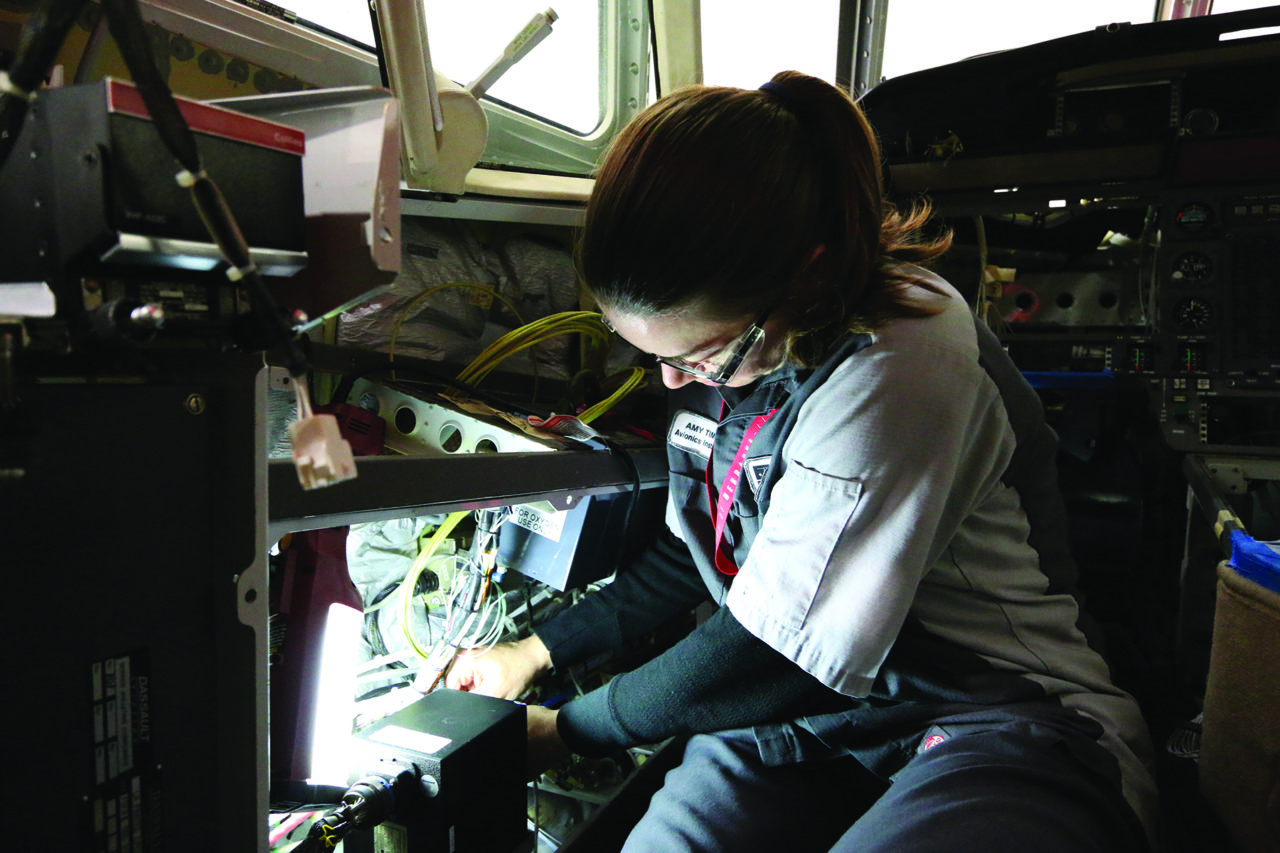
Photo courtesy of Duncan Aviation
Following our ADS-B webinar co-presented with Rotor & Wing International, we provide feedback
on the questions that went unanswered during that event.
Why is it still necessary to do an ADS-B flight test per AC 20-165B for supplemental type certificate (STC) approvals when all the parameters can be properly tested during ground tests?
The main purpose for the test flight is to test the avionics dynamically to assess the GPS performance during maneuvering.
Is there a way to address non-performing emitter (NPE) installation issues at the point of install?
Most NPEs are a result of improper avionics configuration or wiring during installation. Others are a result of component software compatibility, all of which could be detected with appropriate ground test equipment or flight check.
Has the FAA addressed the military flight ID format that is not in compliance with the performance monitoring system flight ID format?
The FAA is working with the U.S. Defense Dept. and other federal, state and local agencies to address flight ID protocol.
If the FAA audits NPE data, how do you report inaccurate transmitted data to the registered owner operator?
The ADS-B Focus Team contacts owners via phone or email if able. A letter of finding is mailed to the address on the aircraft’s registration if we are unable to contact via phone or email.
How is inaccurate data for N-registered aircraft flying in outside the U.S. handled?
We work through our international Flight Standards Office (AFS-50) to resolve non-U.S.-registered NPEs.
Will local FAA offices treat errant transmitted code by local registered aircraft a pilot deviation or a maintenance issue?
With a few exceptions, most NPEs will be treated as airworthiness issues and the ADS-B Focus Team will resolve them directly with the owner. Resolution of NPE aircraft for certificated operators will be coordinated through the principal inspectors.
What is the split of NPEs between airliners, regional transports, business jets and general aviation?
This information can be found at https://www.faa.gov/nextgen/equipadsb/levels/.
What is the procedure for validating the ADS-B system once it is installed in the aircraft?
Verification of proper configuration and performance can be accomplished using appropriate ground test equipment or check flight using the Public ADS-B Performance Report service at https://adsbperformance.faa.gov/PAPRRequest.aspx.
What should be included in the statement of compliance from the manufacturer or the STC holder?
The manufacturer’s statement of compliance should include a reference to compliance of the equipment performance requirements specified in§91.227. See Notice 8900.362.
What is “cloaking” for special mission and military aircraft?
These are operations in which the aircraft transmit non-descript ADS-B information to prevent association of flight data to sensitive missions.
Are military aircraft exempted from ADS-B compliance?
The FAA has not exempted any public or private entity from compliance to the rule.
If the aircraft is only compliant to DO-260A and not DO-260B, will it still be grounded Jan. 1, 2020?
The aircraft would not be permitted to operate in the airspace identified in Federal Aviation Regulations Part 91.225 without prior authorization from ATC.
Is there any plan for the FAA to mandate any Mode-S capability from transponders similar to the Eurocontrol Mode-S EHS mandate?
There are no plans to mandate additional Mode S capabilities in the U.S.
Are non-U.S.-registered airplanes that fly to the U.S. that will retire by 2021-2022 also be required to equip ADS-B per DO-260B?
All aircraft operating in U.S. airspace specified in FAR 91.225 after Jan. 1, 2020, will need to equip for the mandate. As with any FAA rule, exemption requests can be submitted for consideration.
Is designated engineering representative (DER) approval an option, or is ADS-B equipage only possible via an STC installation?
This would depend on the scope of the DER’s agreement with the applicable Aircraft Certification Office oversight. Initial ADS-B systems (transmitter and GPS pairing) must be approved via TC or STC.
What is the FAA doing to correct all of the NPE installation errors?
The ADS-B Focus Team uses a multi-faceted mitigation strategy to reduce installation errors, including outreach, direct owner/operator coordination, repair station remediation, aircraft condition notices and letter of finding issued to owner/operator.
Is a helicopter ADS-B Out message required to have a length/width code configured?
There is no language in AC 20-165B that waives the requirement for any aircraft to not transmit the length/width code when it’s on the surface. Helicopters hover-taxi and are airborne while they’re taxiing around the airport. When they’re in that configuration, they’re not required to transmit the length/width code. However, no requirement in FAA policy or guidance permits helicopters to not transmit a length/width code when it’s appropriate.
How can you estimate the equipment/installation costs and down times for business jets by type?
Gary Harpster of Duncan Aviation told webinar attendees, “We need to know what kind of transponders are in the aircraft, full part numbers, we need to know what kind of FMSs are in the aircraft. Are they already WAAS receivers? If not, do you have WAAS GPS receivers in the aircraft? If it’s a Honeywell package, we need to know the RMUs. Are they RMU 850s? Are they RMU 855s? Then the RCZs, radios, we need to know the dash numbers of the RCZ radios. With that baseline information, we can generate a proposal as to what it’s going to take to get your aircraft compliant. If it’s a Collins-configured aircraft, we primarily need to know the existing transponder part number and then we know whether it’s a ProLine 4 or ProLine 21, etc. A few of those specific questions will help us put a proposal together and once we know that, we can estimate the downtime as well.”